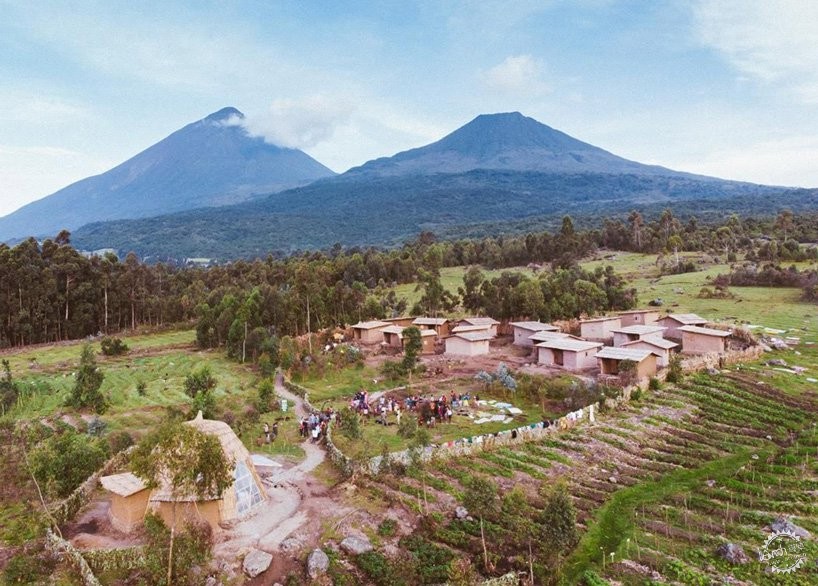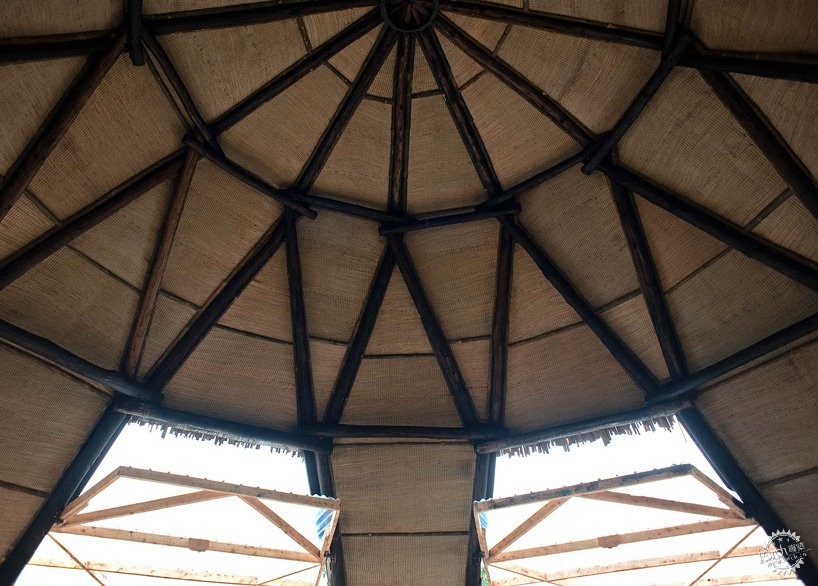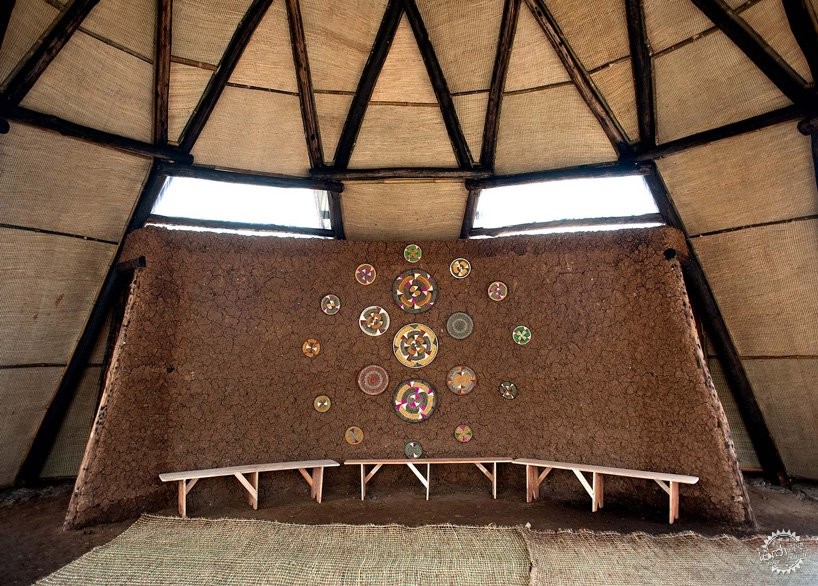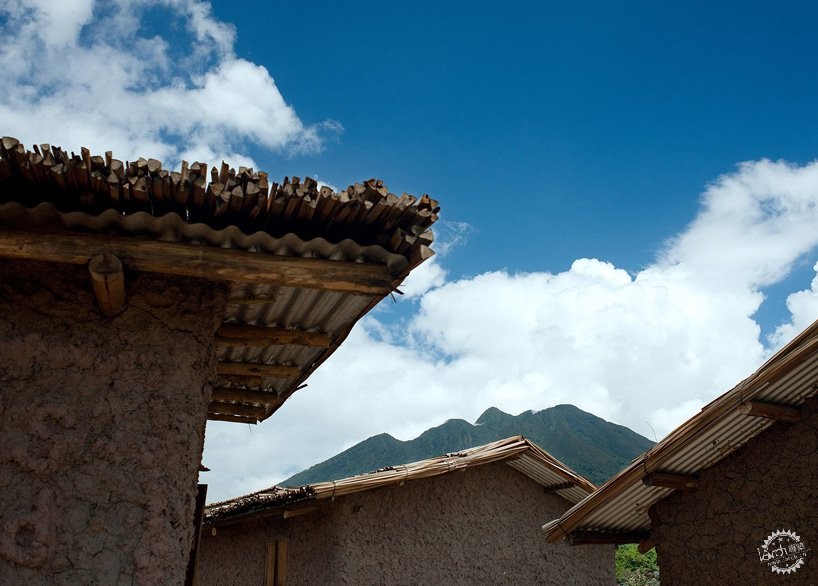
FH建筑工作室使用桉树杆和毛石在乌干达建造巴特瓦族居所
Studio FH uses eucalyptus poles and rubble stone to build the Batwa settlement in Uganda
由专筑网李佳琪,邢子编译
FH建筑工作室在乌干达Gahinga为18户家庭免费设计了居所。这些20平方米的建筑,为被边缘化的巴特瓦族群体而建造。他们自从被赶出森林,就一直生活在贫困之中,而该项目可以为100多人提供新的家园。
Studio FH Architects has designed a settlement for eighteen families in Gahinga, Uganda, for free, as part of their pro bono program. Built for and with a marginalized Batwa group, people living in poverty and destitution ever since their eviction from the forest, the 20 sqm structures now provide a new home for over 100 people.

all photos © will boase photography and craig howes (drone photo)
居住点占地10英亩,由Volcanoes Safaris Partnership Trust捐赠,建造材料由Volcanoes Safaris和附近Gahinga山上小屋的旅客捐赠。乌干达FH工作室设计并监督了18栋房屋的建造,其建筑布局以巴特瓦族人使用树枝和草地建造的房屋为原型。而其布局略稍有不同,但都配有一个用来做饭的有顶阳台,一个小公共空间和一个小型卧室。建筑均用毛石做地基,桉树杆做竹栅,土灰泥建墙。而屋顶则是由金属片制成,上面以纸莎草层覆盖。
The settlement occupies 10 acres of land, donated by the Volcanoes Safaris Partnership Trust, and utilizes materials donated by Volcanoes Safaris and guests of their nearby Mount Gahinga lodge. Uganda-based Studio FH has designed and supervised the building of 18 houses, with a floorplan based on a model house built by members of the Batwa group using branches and grass. The homes’s layouts vary slightly, but they all have a covered veranda for cooking, a small common room and tiny bedrooms, while they are built using rubble stone for foundations and eucalyptus poles with a bamboo grid and earth plaster for the walls. Roofs are made of metal sheets with a papyrus layer above.

房屋的布置是由建造者自己来完成,设计师鼓励他们对树木、岩石和其他事物作出回应,于此同时避免开口朝向来自火山的强风。这种“自发”的村庄布局使房屋保持了紧密的联系,防风的同时可以最大限度利用可供耕种的空间,而随着时间的推移,在植物的帮助下,会形成舒适的公共空间和生态环境。在峡谷的斜坡上,有两幢小建筑物中设有厕所,这解决了当地缺乏卫生设施的问题,创造了一个有尊严且健康的生活环境。
The placement of houses was done ‘on the go’ by the builders themselves, who were encourage to respond to trees, rocks, and other features, and to avoid verandas facing the strong winds coming from the volcanoes. This ‘spontaneous’ village layout sees the houses kept tightly spaced for wind protection and the space available for farming maximized, while over time, and with the help of trees, it will create comfortable public spaces and niches. On the slopes of a ravine, two small buildings accommodate latrines, solving the issue of lack of proper sanitation and achieving a dignified and healthy environment.

在该居住点的主要通道附近,设计师新建了一个面积约100平方米的社区中心。这座穹顶结构受巴特瓦地区一处传统轻型森林住宅的启发,由树枝和草地覆盖而成。其多用途空间可用于集会、舞蹈表演、成人教育和其他用途。房屋由涂有回收发动机油的桉树杆、镀锌金属片建造,用纸莎草做屋顶,半透明材料作为门窗,草垫作为天花板。该结构的总高度为6米,有两个车库式的大门,可以打开以扩大空间。
Near the main access of the settlement, a new community center of about 100 sqm has been built. The dome-shaped structure is inspired by a traditional, light-weight forest dwelling of the Batwa made of branches and covered by grass. The multi-purpose space can be used for assemblies, dance performances, adult education and other uses. It is made of eucalyptus poles painted with recycled engine oil, galvanized metal sheets, papyrus roof cover, translucent sheets for doors and windows, and grass mats for the ceiling. The structure has a total height of six meters and features two garage-like doors that can be swung open to increase its size.








项目信息:
位置:乌干达
委托人:Volcanoes Safaris Partnership Trust
提供服务:建筑(无偿)
建筑团队:Felix Holland , Marco Cestarolli , Philip Matovu
其他顾问:Aquila 画廊(结构工程师,无偿)
承包人:Volcanoes Safaris 施工团队以及社区的支持
建筑毛面积:480平方米
Project info:
Location: Gahinga, Uganda
Client: Volcanoes Safaris Partnership Trust
Service provided: Architecture (Pro-bono)
Architectural team: Felix Holland with Marco Cestarolli and Philip Matovu
Other consultants: Aquila Gallery (structural engineer, Pro-bono)
Contractor: Volcanoes Safaris’ in-house construction team with community support
Gross floor area: 480m2
|
|
